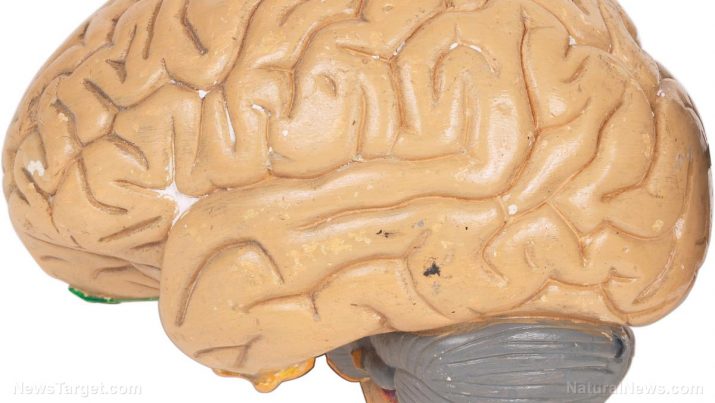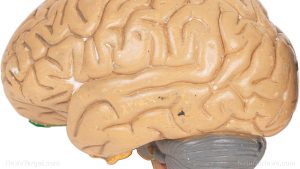
Kuru – causes, side effects and treatments at NaturalPedia.com
Saturday, April 28, 2018 by Zoey Sky
http://www.naturalpedia.com/kuru-causes-side-effects-and-treatments-at-naturalpedia-com.html

Kuru is a rare progressive fatal disease of the brain. The disease is caused by an infectious agent spread among people in Papua New Guinea due to ritual cannibalism.
Kuru is an infectious form of subacute spongiform encephalopathy and it is caused by a tiny infectious particle known as a prion. The disease seems to be similar to bovine spongiform encephalopathy (also called “mad cow disease”) and Creuztfeldt-Jakob disease. Kuru is also known as “trembling disease.”
Studies on kuru contributed greatly to scientific research. Kuru was the first neurodegenerative disease caused by an infectious agent. The discovery of kuru resulted in the creation of a new class of diseases like Creutzfeldt-Jakob disease, fatal familial insomnia, and Gerstmann-Sträussler-Scheinker disease. Even current research concerning kuru influences studies on neurodegenerative diseases.

Known side effects of kuru
The side effects of other common neurological disorders (e.g. Parkinson’s disease or stroke) are similar to the side effects of kuru, which may include:
- Compulsive and random laughing or crying
- Dementia
- Difficulty swallowing
- Difficulty walking
- Inability to properly hold objects
- Moodiness and changes in behavior
- Muscle twitching and tremors
- Poor coordination
- Slurred speech
Kuru occurs in three stages. The stages are often preceded by headaches and joint pain. Because the symptoms are common, they are not always identified as precursors to a more severe disease.
- In the first stage, a patient with kuru will experience some loss of bodily control. They may have a hard time balancing and maintaining proper posture.
- For the second stage (or sedentary stage), the patient will be unable to walk. They may start to experience body tremors and telltale involuntary jerks and movements.
- In the third stage, the patient often becomes bedridden and incontinent. Individuals with kuru may also lose the ability to speak. Patients may develop dementia or changes in behavior in the third stage, such as being unconcerned about their health. Malnutrition and starvation can also set in during the final stage since the patient will have difficulty eating and swallowing. These secondary symptoms may cause death after a year. Patients in the third stage of kuru usually die due to pneumonia.
Risk factors for kuru may include:
- The major risk factor for kuru is consuming human brain tissue that contains infectious particles. This practice of ritual cannibalism was prevalent among tribes in Papua New Guinea, especially during the early part of the 20th century. However, the condition became rare after cannibalism was abolished.
- Women had a higher risk of developing this disease when ritual cannibalism was prevalent in the country.
Body systems harmed by kuru
Kuru may cause the following complications:
- Bed sores/wound infection
- Individuals may be bedridden and in a vegetative state
- Malnutrition
- Pneumonia
Food items or nutrients that may prevent kuru
The following foods or nutrients can help prevent kuru and malnutrition:
- Beans, eggs, fish, meat, pulses, and other proteins – These foods contain protein that the body needs to grow and repair itself. They are also rich in various vitamins and minerals. Lean cuts of meat and skinless poultry contain protein vitamins and minerals like iron, vitamin B, and zinc. Fish is also rich in protein and it has many vitamins and minerals while oily fish is chock-full of omega-3 fatty acids. Eggs and pulses (e.g. beans, nuts, and seeds) are full of protein. Nuts contain fiber but they are also full of fat so eat them moderately.
- Fruits and vegetables – Fruits and vegetables are full of minerals and vitamins. Consume about five portions of different fruits and vegetables every day.
- Milk and dairy – Milk and dairy like cheese and yogurt are rich in protein. They also contain calcium that can keep your bones strong. Other sources include unsweetened and calcium-fortified dairy alternatives like soy milk, soy yogurt, and soy cheeses.
- Whole grain starchy foods – Base your meals on whole grain foods such as potatoes with the skins on, which are full of fiber and vitamins. Other sources include brown rice, whole wheat bread, and whole wheat pasta
Treatments, management plans for kuru
Since the prions that cause kuru are difficult to destroy, there is no known successful treatment for the disease. In fact, brains contaminated with prions are still infectious even after being preserved in formaldehyde for several years.
Where to learn more
- Beware of Foodborne Diseases (Opinion)
- Eating Meat Kills More People Than Previously Thought
- Human ‘Mad Cow’ Could Cause Eventual Epidemic (press release)
- Mad cow disease could remain hidden in humans for decades; future death waves possible
- New research: sporadic type of Creutzfeldt-Jakob disease (mad cow) results from surgery
Summary
Kuru is a rare progressive fatal disease of the brain. The disease is caused by an infectious agent that spread among people in Papua New Guinea due to ritual cannibalism.
Kuru is an infectious form of subacute spongiform encephalopathy and it is caused by a tiny infectious particle known as a prion. The disease seems to be similar to bovine spongiform encephalopathy ( also called “mad cow disease”) and Creuztfeldt-Jakob disease. Kuru is also known as “trembling disease.”
The side effects of other common neurological disorders are similar to the side effects of kuru. They may include compulsive and random laughing or crying, dementia, difficulty swallowing, and difficulty walking.
Kuru may cause complications like bed sores/wound infection, being bedridden and in a vegetative state, malnutrition, and pneumonia.
Beans, eggs, fish, meat, pulses, and other proteins; fruits and vegetables; milk and dairy, and whole grain starchy foods can help prevent kuru and malnutrition.
Since the prions that cause kuru are difficult to destroy, there is no known successful treatment for the disease. In fact, brains contaminated with prions are still infectious even after being preserved in formaldehyde for several years.
Sources include:
Tagged Under: Tags: kuru





